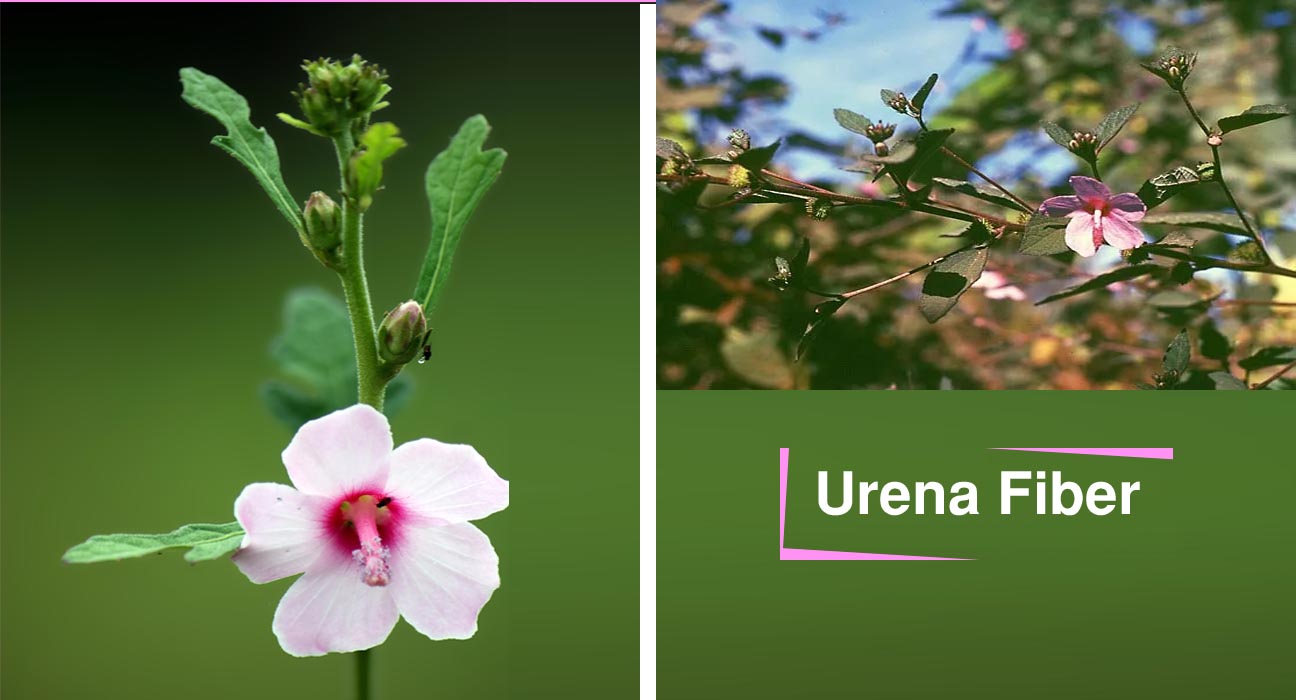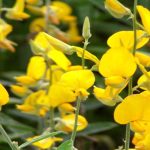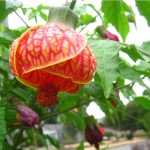Urena Fiber is a bast fiber. It is one of the oldest fibers. The bast fiber from Urena lobata is widely used traditionally for making cordage and coarse textiles. And industrially as a substitute for jute (Corchorus spp.); for instance to make sacks; carpets, cordage, and upholstery. We will discuss Urena Fiber Properties and Uses in this article.
History of Urena Fiber
The origin of Urena lobata is not certain, but it is probably of African or Asian origin. It is now widely distributed in a wild or naturalized state throughout the tropics and subtropics. In tropical Africa; it occurs naturally from Cape Verde and Senegal eastward to Ethiopia and Eritrea; southward across the continent to South Africa.
It also occurs in the Indian Ocean islands. Urena lobata is grown as a commercial fiber crop in DR Congo; and for local use in Ghana, Nigeria, and elsewhere in tropical Africa; commercial fiber production in Angola and Madagascar is mainly based on wild or naturalized plants.
Urena Fiber Physical Properties
Urena Fiber | Fresh stems of Urena lobata yield (3–)5–6(–7)% retted bast fiber. The fiber is fine, soft, flexible and lustrous, with a creamy white or pale yellow colour. It resembles jute more than other jute substitutes, such as kenaf (Hibiscus cannabinus L.) and roselle (Hibiscus sabdariffa L.).
It can be spun on jute machinery without any change to the machines and without the operators needing experience with Urena lobata. The bast fiber cells are (0.8–)1.4–4.5(–5.9) mm long, with a diameter of (9–)12–19(–34) μm. fibers investigated in Nigeria were on average 2.5 mm long and 21.6 μm wide, with a lumen width of 10.9 μm.
Information on the fiber composition shows a wide variation in cellulose (63–87%) and lignin (7–12%) contents. fiber strands extracted from wild plants are usually only about 1 m long, whereas fiber strands from cultivated plants have an average length of about 2 m.
Rope made of Urena lobata fiber is considered less suitable for wet conditions, because of the lower wet strength and the fact that it deteriorates rapidly. The fiber quality can be improved by chemically joining them with acrylonitrile fibers. Kraft pulping experiments with Urena lobata bark and pith in South Africa gave pulp yields of 43–47%.
Urena Fiber
Per 100 g edible portion, the raw leaves contain: water 81.8 g, energy 226 kJ (54 kcal), protein 3.2 g, fat 0.1 g, total carbohydrate (including fiber) 12.8 g, fiber 1.8 g, P 67 mg (Leung, Busson & Jardin, 1968). The composition of Urena lobata forage (moisture content 79.4%) in southern Nigeria was on a dry matter basis: crude protein 15.3%, ether extract 2.0%, crude fiber 17.6%, ash 6.0%, silica 3.9%, N-free extract 59.1%.
The seeds contain 7–18% oil, with linoleic acid, palmitic acid, and oleic acid as major fatty acids, but also containing other poly-unsaturated fatty acids and cyclopropenoid acids malvalic acid and sterculic acid. However, concentrations of the different compounds vary widely.
The numerous medicinal uses of Urena lobata are reflected by numerous biologically active compounds. The aerial parts contain the flavonoids quercetin, kaempferol, rutin, afzelin, astragalin, teniposide, crenuloside, and several kaempferol glycosides.
They further contain the phenolic compounds syringic acid, glucosyringic acid, salicylic acid, protocatechuic acid, caffeic acid, diisobutyl phthalate, and also maleic acid and several long-chain fatty acids with an uneven number of C-atoms. A methanolic extract of Urena lobata roots has shown antibacterial activity against a range of microorganisms. Imperatorin, a furanocoumarin, has been isolated from the root.
Uses of Urena Fiber
The bast fiber from Urena lobata is widely used traditionally for making cordage and coarse textiles, and industrially as a substitute for jute (Corchorus spp.), for instance, to make sacks, carpets, cordage, and upholstery. It is often used mixed with jute.
In tropical Africa and elsewhere Urena lobata serves for making string, twines, ropes, fishing lines and nets, and nets for hunting, while the unprocessed bark is often used as tying material. Also In Ghana, the stripped and plaited bark is used to bind loads. In Gabon, it is used to affix leaves for thatching.
In Malawi the stems are woven into walls of grain stores. And In Madagascar, the fiber is locally used in the manufacture of bags. The fiber of Urena lobata can be made into strong, bank-note quality paper and whole plants can be pulped as well.
Sources: Urena Fiber
- uses.plantnet-project
- ukessays
You May Also Read:




